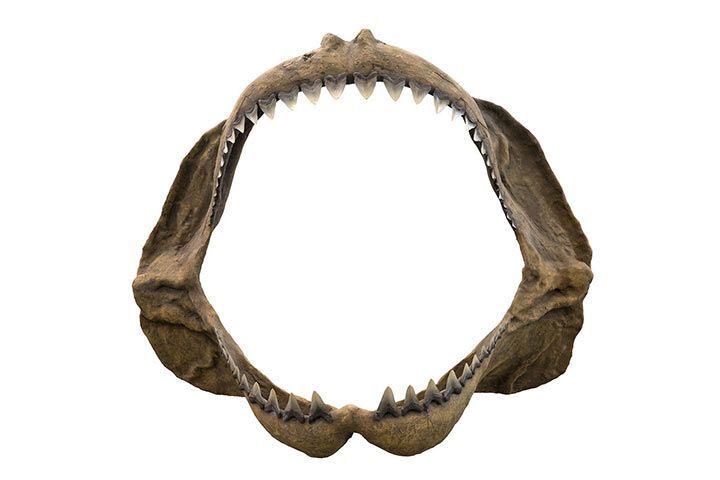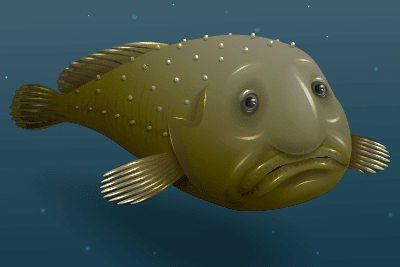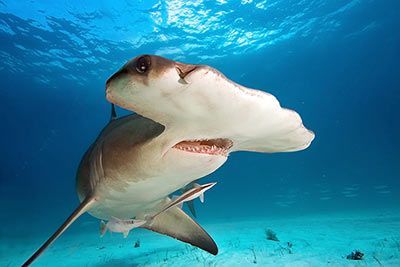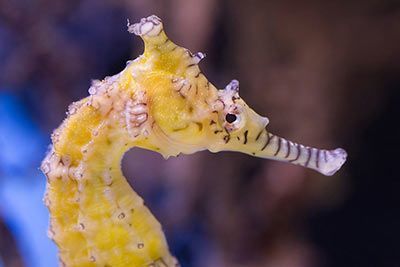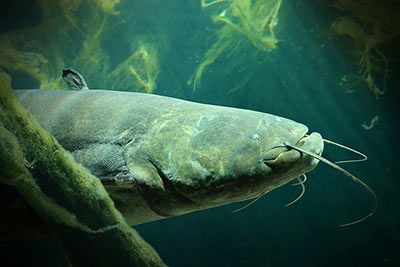Megalodon
Megalodon Facts
| Size | 42-60 ft (13-18 m) |
| Speed | Unknown |
| Weight | 12-60 tons |
| Lifespan | Unknown |
| Food | Large marine animals |
| Predators | - |
| Habitat | Warm oceans |
| Order | Lamniformes |
| Family | Lamnidae |
| Scientific name | Carcharocles megalodon |
| Characteristics | Giant mouth, 5-7 inch (12-18 cm) teeth |
Main Characteristics
The megalodon is a prehistoric shark that died out 3.6 million years ago.
Origin
Where Does the Name Megalodon Come From?
Megalodon comes from the Greek “mega” for “big” and “odon” for “tooth”.
Anatomy and Appearance
Megalodon Teeth
Megalodon teeth were incredibly long. The measuerd 5-7 inch (12-18 cm) in length, which is about the size of a human hand. The teeth were heart-shaped and serrated. Researchers believe that it had a total of 267 teeth in its mouth, divided over several layers. Luckily, animals rarely need to see a dentist.
Megalodon's Jaw
Do you know the Smart car? It’s an extremely compact city car that fits into even the smallest parking spaces. A megalodon’s jaw was slightly bigger than this car: 9.8 feet (3 meters) wide and 8.2 feet (2.5 meters) high!
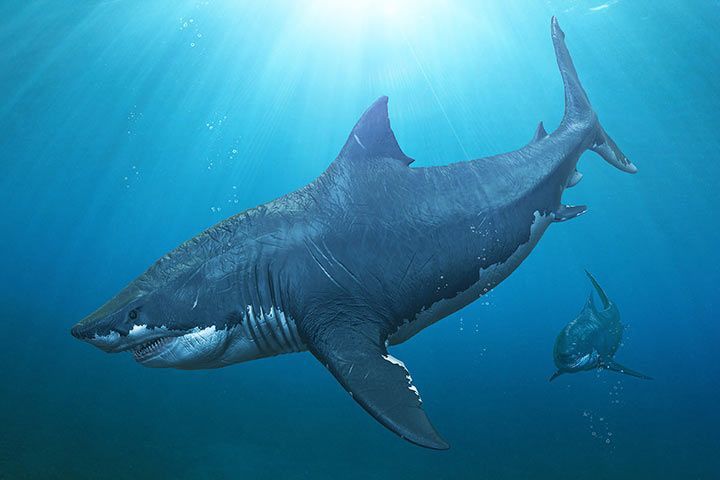
Behavior
What Did the Megalodon Eat?
Researchers believe that the megalodon ate more than 2,200 lb (1,000 kg) of food each day. The menu mostly consisted of small and large whales e.g. dolphins, sperm whales, bowhead whales, rorquals and porpoises as well as seals and manatees.
After the last Ice Age, the seas cooled considerably. This made life hard for the megalodon, as it needed warm water to survive. At the same time, the marine animals that survived the Ice Age were mostly fast swimmers that the megalodon struggled to catch. Another reason was probably that its prey moved to the fish-rich but even colder polar regions. The megalodon was unable to follow them and starved.
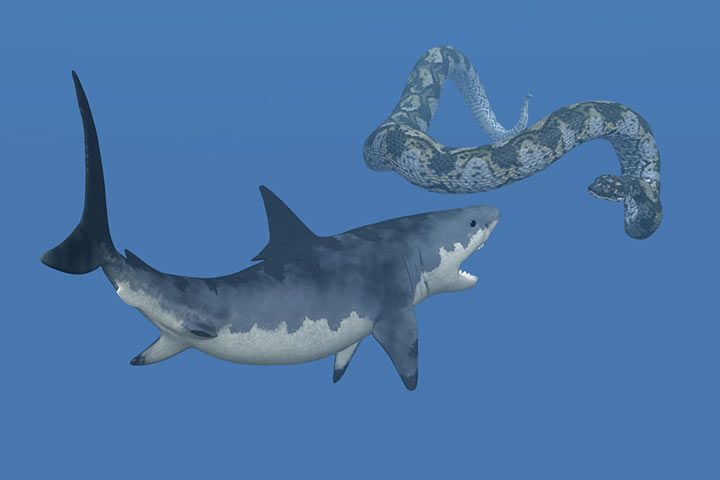
Senses and Abilities
Megalodon's Bite Force
In 2008, a research team from Australia and the USA tried to work out the megalodon’s bite force. They created a computer simulation to work it out. The results were impressive. The megalodon’s bite force must have been 10 times stronger than that of the great white shark. This means that megalodons had the strongest bite of any animal that has ever lived.
Megalodon's Hunting Technique
Although researchers believe that the great white shark is related to the megalodon, the megalodon probably had a different hunting technique. Great whites aim for their prey’s soft flesh e.g. the belly. The megalodon was probably able to bite through cartilage and bone so concentrated on making its prey unable to swim away.
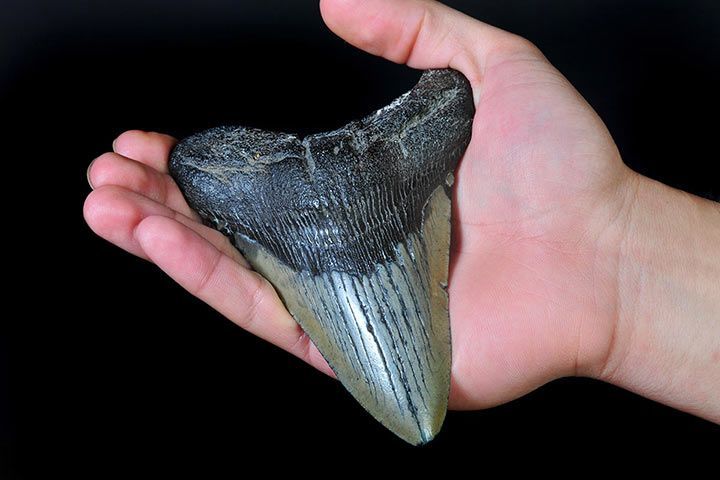
Worth Knowing
Reality vs. Made-up Stories
There are a few films and books that feature the megalodon. Mostly as a terrifying monster. Some websites even claim to have “evidence” that the megalodon is still alive, tearing around the ocean. But these are photos and videos that have been edited using computer programs to cause a sensation.
From here you find infos written by animalfunfacts fan Vitalij!
 Why Did They Go Extinct?
Why Did They Go Extinct?
Climate change was one of the many reasons that the megalodon died out.
Help! A Megalodon!
The megalodon’s teeth were 4.7-7 inch (12-18 cm) long. That’s about as big as a human hand. Take a ruler, measure that length and hold it against your hand.
From Young Animal to Hunter
Researchers believe that a newborn megalodon was almost 13 feet (4 meters) long. Grown animals are believed to have been up to 100 feet (30 meters) long. As a comparison: swimming pools are usually 82 feet (25 meters) long. Next time you go to the pool, look at the length from the side! Pretty huge, right? In the meantime, scientists have found out that the megalodon may have been “just” 60 feet (18 meters) long.
The facts above were submitted by animalfunfacts.net fan Vitalij. Thank you! Do you want to write a fan factsheet?
